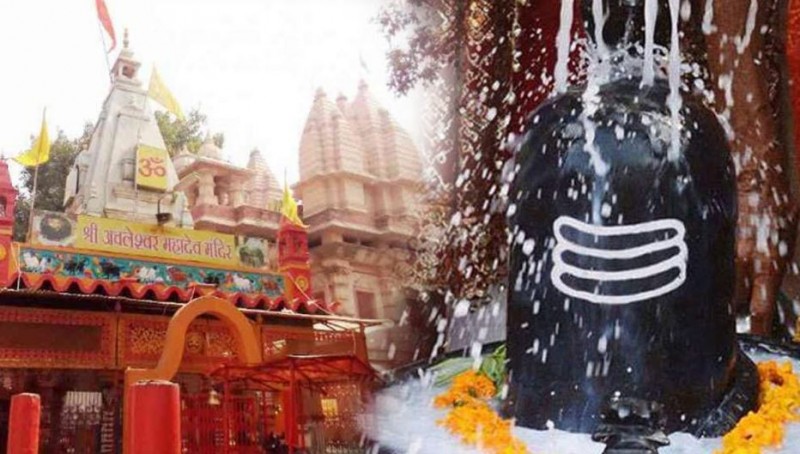
Nestled in the heart of Dholpur, Rajasthan, the Achaleshwar Mahadev Temple stands as a testament to the mystical wonders of the divine. This ancient Hindu temple is renowned for its unique phenomenon where the color of the Shivling, the symbolic representation of Lord Shiva, changes three times a day. In this article, we will explore the intriguing legends, spiritual significance, and the enigmatic color-changing phenomenon of the Shivling at the Achaleshwar Mahadev Temple.
The Legend of Achaleshwar Mahadev Temple
According to local legends, the Achaleshwar Mahadev Temple holds immense historical and mythological significance. It is believed that the temple was built during the reign of the Chauhan dynasty, and its origin can be traced back to ancient times. The name "Achaleshwar" is derived from "Achala" meaning immovable and "Ishwar" referring to Lord Shiva. The temple is dedicated to Lord Shiva, one of the principal deities in Hinduism.
The Color-Changing Shivling
The most intriguing aspect of the Achaleshwar Mahadev Temple is the phenomenon of the color-changing Shivling. It is said that the color of the Shivling mysteriously transforms three times a day - during sunrise, noon, and sunset. The Shivling transitions from red in the morning, to saffron in the afternoon, and finally to blue during the evening hours. Devotees from far and wide gather to witness this awe-inspiring spectacle and seek the blessings of Lord Shiva.
Spiritual Significance
The color-changing phenomenon of the Shivling at Achaleshwar Mahadev Temple holds great spiritual significance. It is believed to be a divine message and a celestial display of Lord Shiva's presence. The red color symbolizes the power and vitality of the deity, the saffron represents purity and spirituality, while the blue hue signifies tranquility and calmness. The continuous transformation of colors throughout the day is seen as a reflection of the cosmic energy and the ever-changing nature of existence.
Devotional Practices and Rituals
Devotees visit the Achaleshwar Mahadev Temple to offer prayers, seek blessings, and witness the divine spectacle of the color-changing Shivling. The temple premises reverberate with chants of sacred mantras and hymns dedicated to Lord Shiva. Special rituals and ceremonies are performed by the temple priests to honor the deity and maintain the sanctity of the place. It is believed that sincere devotion and prayer in this sacred space can bring about spiritual growth, inner peace, and fulfillment.
Pilgrimage and Cultural Importance
The Achaleshwar Mahadev Temple holds immense significance as a place of pilgrimage for devotees of Lord Shiva. The temple attracts a large number of visitors, not only from Rajasthan but also from different parts of India. The cultural heritage associated with the temple, its architectural splendor, and the mystique of the color-changing Shivling make it a site of great cultural importance, adding to the rich tapestry of religious diversity in Rajasthan.
Preservation and Reverence
Efforts are made to preserve the sanctity and historical significance of the Achaleshwar Mahadev Temple. The temple authorities, along with the local community, ensure that the rituals and traditions are upheld with utmost reverence. The ongoing maintenance and restoration projects aim to safeguard the architectural beauty and spiritual ambiance of the temple, allowing future generations to continue experiencing its divine aura.
Conclusion
The Achaleshwar Mahadev Temple in Dholpur, Rajasthan, is a testament to the spiritual heritage and mystical wonders of Hinduism. The color-changing Shivling phenomenon at this ancient temple captivates the hearts and minds of devotees, offering a glimpse into the divine presence of Lord Shiva. As people gather to witness this celestial display, they find solace, inspiration, and a deeper connection to the eternal cosmic forces that shape our existence.
Sawan Adhika Maas Starts on July 18, 2023
The Moche Civilization: Unveiling Peru's Intricate Pottery and Art
Why should non-vegetarian food should not be eaten in the month of Sawan?